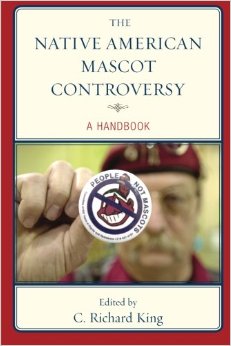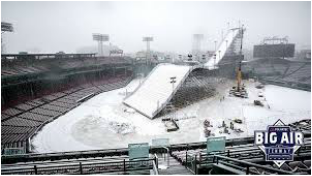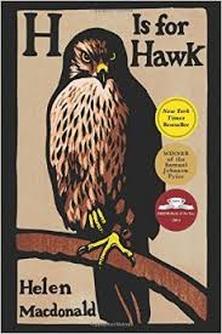 It's persuasive research time in the secondary schools again, and any librarian worth their salt knows what this means: Scores of eager, wide eyed teens asking, "Can you tell me where the books for legalizing marijuana are?" Kids, please-- let's try something new. The sporting world is ripe with controversy, and many of these subjects make handsome topics for research papers. One controversy still sitting firmly on the table in 2016 involves Native American mascots. I wanted to give you a heads up on a book I added to my collection that has gained significant use. The Native American Mascot Controversy: A Handbook (2010) is an excellent collection of work that provides a comprehensive and critical account of the mascot controversy. The collection has important essays, position papers, legal policies, primary documents, and extensive lists of resources for further study. The editor C. Richard King divides the text into various categories that aim to educate students first on the issue and offer perspective later. Sections include: Background, Educational Issues, Reform and Resistance, and Documents: Policies, Resolutions, and Legislation. Like most issues, students are getting the watered-down media version of the mascot controversy at best. Kids understand there is an issue with mascots and that they are "offensive." But rarely can they answer "why" the use of these names is offensive to Native Americans. This resource is a fantastic tool to help students dig beneath the surface and really invest themselves in the issue. I fully believe that this book should be in every high school, university, and public collection. The writing is accessible enough for teens and broken up cleanly enough that can be easily mined for research sources. While the book is obviously not a pleasure read, it serves a great purpose in our libraries of showing kids there is still some value in print sources.
2 Comments

If you for some chance got messed up channel surfing like I did last Thursday night and stumbled upon the Big Air snowboarding competition at Fenway Park, how lucky you were! Imagine snowboarding acrobatics off a man made mountain jump from center field to home plate in Fenway!! Stunning!
I don't think it would be out of bounds to say that snowboarding is one of the fastest growing snow sports and Winter Olympic events. If you look at what events have been added over the past 20 years, I think the various snowboarding competitions would have to win the day. Whether it is working the half pipe or working big air, this sport packs a potent punch of thrills, danger, excitement, and awe. Not to mention, it's cool--it's sexy! The athletes are young, athletic, good looking, crazy, and eccentric. Talk about a made-for-TV sport! In light of this popularity, however, it absolutely blows me away that there are so few books by snowboarders. You guys are killing me! Pull out the earbuds for a second. Do you have any idea how many teenage kids come to me looking for books about snowboarding?? I'm not talking "how to snowboard" junk. I've never met a teenager that wanted to learn how to snowboard by reading a "How-to" book--they want to break limbs and get concussed. What these kids want are stories!! What makes you guys click? Hell, if being a librarian were a standard of coolness and people were demanding books, I'd have the computer warmed up and sordid tales of coffee drinking and Dewey transgressions would fly. So take this as advice. There's a market demand. There's an Olympic year on the horizon. Could the stars align better? There are some titles that I have in my library that might be a nice add to a collection that serves an under 21 crowd. Most of these stories trace the basic rise of the sport and talk about how the image of the sport of snowboarding and it's competitors have evolved. Take a peek at these, and let's hope we get some more action in the coming years.
On My Own Two Feet by Amy Purdy reveals the intimate details of her triumphant comeback from the brink of death to making history as a Paralympic snowboarder. When the Las Vegas native was just nineteen, she contracted bacterial meningitis and was given less than a two percent chance of survival. Purdy fought to live and ended up the only competitor, male or female, with two prosthetic legs to claim a bronze medal for the U.S. Paralympic team in adaptive snowboarding (Amazon).
P3 by Todd Richards. One of the most charismatic, popular, and talented snowboarders in the world, Todd Richards, tells the story of his life as a skateboarder–turned–world–class–snowboarder, and of the sport that in less than 10 years has gone from underground to the forefront of the Olympics(Amazon).. Pretty Good For a Girl by Tina Basich. When Basich grabbed her rented snowboard and headed to the mountains in Lake Tahoe, snowboarding wasn't even considered a sport . . . yet. It was the beginning, and could have easily gone the way of many other sports and become dominated by male-driven competition. Representing for women everywhere, she became a snowboarding all-star, started her own signature board and clothing lines for women, founded Boarding for Breast Cancer, and followed her heart, which led her on the adventure of a lifetime(Amazon). Off the Chain by Ross Rebagliati begins with the sport’s early days, when the pioneers built their own boards and snuck onto the slopes. Rebagliati profiles snowboarding’s most notorious figures, explores the nature of snowboarding culture, and tells what touring as a young World Cup snowboarder is like. He traces the mainstreaming of the sport, the evolution of snowboard fashion, and the emergence of Shaun White as snowboarding’s first megastar. He’s unsparing in revealing the sport’s more controversial aspects, from groupies to drugs, including his own experience having his gold medal revoked — and then restored — after failing a drug test(Amazon). Chasing Epic uses Jeff Curtes’s camera juxtaposes the best snowboarders of our time, including Shaun White and many others, across impossibly beautiful, majestic, and insane mountainsides. His compositions emphasize the lone individual soaring across awe-inspiring landscapes in an almost surreal and sometimes abstract figure/ground/sky relationship. Curtes’s images capture the skill, courage, and freedom that these athletes possess in their pursuit of the perfect ride (Amazon).  H is for Hawk by Helen Macdonald H is for Hawk by Helen Macdonald I bet you didn't know falconry was a sport. I'm not talking Matty Ryan, Julio Jones, and a consistently underachieving football team. I'm talking real birds. Allow me a minute to educate you: Falconry or hawking is sport that involves taming and training a bird of prey to hunt not for itself but for its trainer, who is referred to as a falconer. This sport was first developed more than three to four thousand years ago by Chinese and Persians. During the Middle Ages falconry was brought to Europe, where it was called the "sport of kings." I bring this up because I wanted to talk about the book, H is for Hawk, and since I have now established that it is a sport, I can officially post it here. Helen Macdonald's story consists of her adopting and raising one of nature's most vicious predators. Fierce and feral, Helen's goshawk has a temperament that mirrors her own state of grief after her father's death, and together raptor and human "discover the pain and beauty of being alive." First, I must say that this book was not a quick read for me, but full of starts and stops. I shouldn't have started it near the holidays--there's too much commotion. You'll want to savor the words in this book. This isn't a Starbucks sit down, it demands a comfortable chair, quiet room, and a window overlooking a barren winter landscape. There's a lot to chew on, and it is hard to chew on anything consistently when you have Santa Claus, three kids, and a dog that keeps dropping a tennis ball at your feet. But I was bound and determined to get through this on my terms, because I'm a sucker for quietly depressing stuff that eventually sparks hope and involves nature! The book carries a beautiful thread that explores Helen's father's death and her grief. I really loved Macdonald's keen eye for so many of her father's nuances. It really made me think about my legacy with my own children, and how they are so in tune with every move you make. She has such an eye for the sensory minutia that profile her father. What will my kids remember about me when I'm dead? Now that's depressing. There is then the overarching thread that deals with her bird(goshawk) Mabel. Macdonald purchases the bird after her father's death as a means of coping, and we are able to follow her as she interacts with this viciously beautiful creature in an attempt to train it--and really steady herself. It is fascinating to see who is really in control during the whole process, and it highlights our essential struggle to tame all that can't be tamed in life. It's quite beautiful. Of course, the descriptions of the actual sport and her interactions with the bird are amazing (I think people forget just how violent of predators hawks are!) If anything, you'll leave with an abundant knowledge of hawking to impress people with at your next social gathering! As you can imagine, the writing is phenomenal. Helen is a mix of witty, sarcastic, brutally honest, self defacing, vulnerable, stubborn, and sweetly emotional. She has a voice that you want to love, and there are many times you feel like a friend standing along side her tending to Mabel. Obviously this book is a must for public libraries. It was one of 2015 most prized titles. But where would it fit in a school library? Well, to be honest, I am not sure that it would be something flying off the shelves. This is, however, one of those special books in the collection to keep in your bag of tricks for the right occasion. You know, when there is a student whom you know could handle the material and might really "find" something in the book. I use Zen and the Art of Motorcycle Maintenance in much the same way. That instant when a certain someone is looking for something that's "missing" and you quietly put a book like this in their hands, smile warmly, and say, "I think I've got something for you."
When it comes downhill skiing, people seem to be keen on two things: speed and wrecks. Truly, there is nothing more astounding than seeing competitive skiers cutting through icy surfaces at 80 mph with only a razor edge holding them in balance. Likewise, when a split second miscalculation is made, nothing is more dramatic than watching a gravity tossed skier careen like a rag doll down the mountain. It is literally breathtaking.
Skiing offers some of the biggest personalities in sports. After all, I think it is fair to say that you HAVE to have a big personality to race they way they do! Perhaps then, it would be fitting that some off these athletes are the subject of books. Most pro skiers seem to have an intoxicating mix of drive, independence, and reckless abandon. Most also have had to overcome some catastrophic crash that becomes a fabric of their story, and in essence, their being. All make for some lively reading. Sadly, I doubt that many of these books make it onto library shelves. Like many winter sports, skiing tends to be seasonal in interest. Besides winters, maybe once every 4 years during Olympic time, when everyone suddenly becomes an expert on things like the rules of curling, these books will surface. I think it is a big mistake more libraries don't offer these books. The personalities are fascinating, and the backstories of competition, comebacks and courage are awesome. It would be a disservice for high schools not to have a few of these books on hand as well, seeing that one of the fastest growing sports in snow state schools is competitive skiing. Plus, these dudes are just downright cool as hell! I mean look at book cover with Tack Strau. I swear I've seen some guy like that in every ski chalet in the world--usually with a girl on each arm!! Perhaps someday there will be a book about Lane Myer and his conquering of the great K-12 slope! (If someone (anyone) reads this and gets this, I may buy you a book!) Send a note! Check out these great titles! (Click on covers for more info)
The God of Skiing by Peter Kray Reveling in the exploits of the legendary Tack Strau, an iconic East Coast racer whose stunning wins and spectacular crashes made him an instant celebrity on the NCAA race circuit, the book reads like a love letter to a sport built on gravity, speed, and the heartbreaking thrill of cold acceleration. When Strau suffers a potentially fatal fall after being signed by the U.S. Ski Team, then disappears, the book takes off on a whirlwind tour of the sport's most storied slopes in an effort to find him (Amazon).
Ski to Die: The Bill Johnson Story by Jennifer Woodlief Bill Johnson took the world by storm at the 1984 Sarajevo Winter Olympics, coming out of nowhere to win the first American gold medal in downhill skiing. He went on to dominate the World Cup races that same year. His success made him an overnight celebrity, but his fame was fleeting. He never won another race, and personal tragedy seemed to follow him at every turn. With his post-Olympic life spiraling out of control, Johnson decided to do the unthinkable — make a comeback at the age of forty. He had his motto, “Ski to Die,” tattooed on his right bicep. In a race at Big Mountain, fearless and in the lead with one turn to go, Johnson crashed face-first into the icy mountain at fifty miles per hour.Ski to Die is a story about the cost of chasing dreams. It is about glory and the attempt to recapture it once it is lost (Amazon) Picabo: Nothing to Hide by Picabo Street Street shares her coming-of-age experience, revealing how adversity shaped a rebellious tomboy into a champion athlete and compassionate woman, in harmony with her family and at peace with her fear of failure. Here, for the first time, Street addresses the pressures exerted on her by her ski sponsors that may have been partly to blame for her terrible crash; the scandals surrounding the Salt Lake City Olympic Committee; and how she overcame a lengthy, debilitating depression (Amazon). The Fall Line by Nathaniel Vinton There was a time the US was an afterthought in the world of competitive skiing. Then came a fledgling class of American racers that disrupted the Alpine racing world order. Led by Bode Miller and Lindsey Vonn, Julia Mancuso and Ted Ligety, this band of iconoclasts made a place for their country on some of the world’s most prestigious race courses. Even as new technology amplified the sport’s inherent danger, the US Ski Team learned how to win, and they changed downhill racing forever(Amazon). Hermann Maier: The Race of My Life. Hermann ""The Herminator"" Maier, born in 1972, rose from humble beginnings as a scrawny mason to the heights of sports stardom, skiing to four world champion titles and two gold medals in super-G and giant slalom. All that changed in 2001, when a motorcycle accident threatened to end not only his career but his life. True to his reputation, Maier fought his way back to the slopes and further victories. This compelling biography tells a riveting story of flirting with death and dodging it through sheer willpower, of painful recoveries and worldwide triumphs, including his appearance at the 1998 Olympic Games at Nagano, where he stunned millions in what has become the most notorious downhill crash of all time(Amazon). Bode: Go Fast. Be Good. Have Fun by Body Miller Born and raised “off the grid”–without electricity or indoor plumbing–in the cabin built by his father in the woods, Bode is unconventional to the core. The strong values of his simple upbringing, where he and his family had to “invent, grow, or carry in” all the essentials have made Bode unique among today’s top sports stars. Bode revolutionized skiing by adopting new and crossover technologies. He drives his tradition-bound European rivals to distraction, skiing and winning by instinct. His outsider status, killer smile, and outspoken yet laid-back persona have earned him a reputation as the Michael Jordan of skiing (Amazon). |
Archives
March 2023
Categories
Categories |











 RSS Feed
RSS Feed